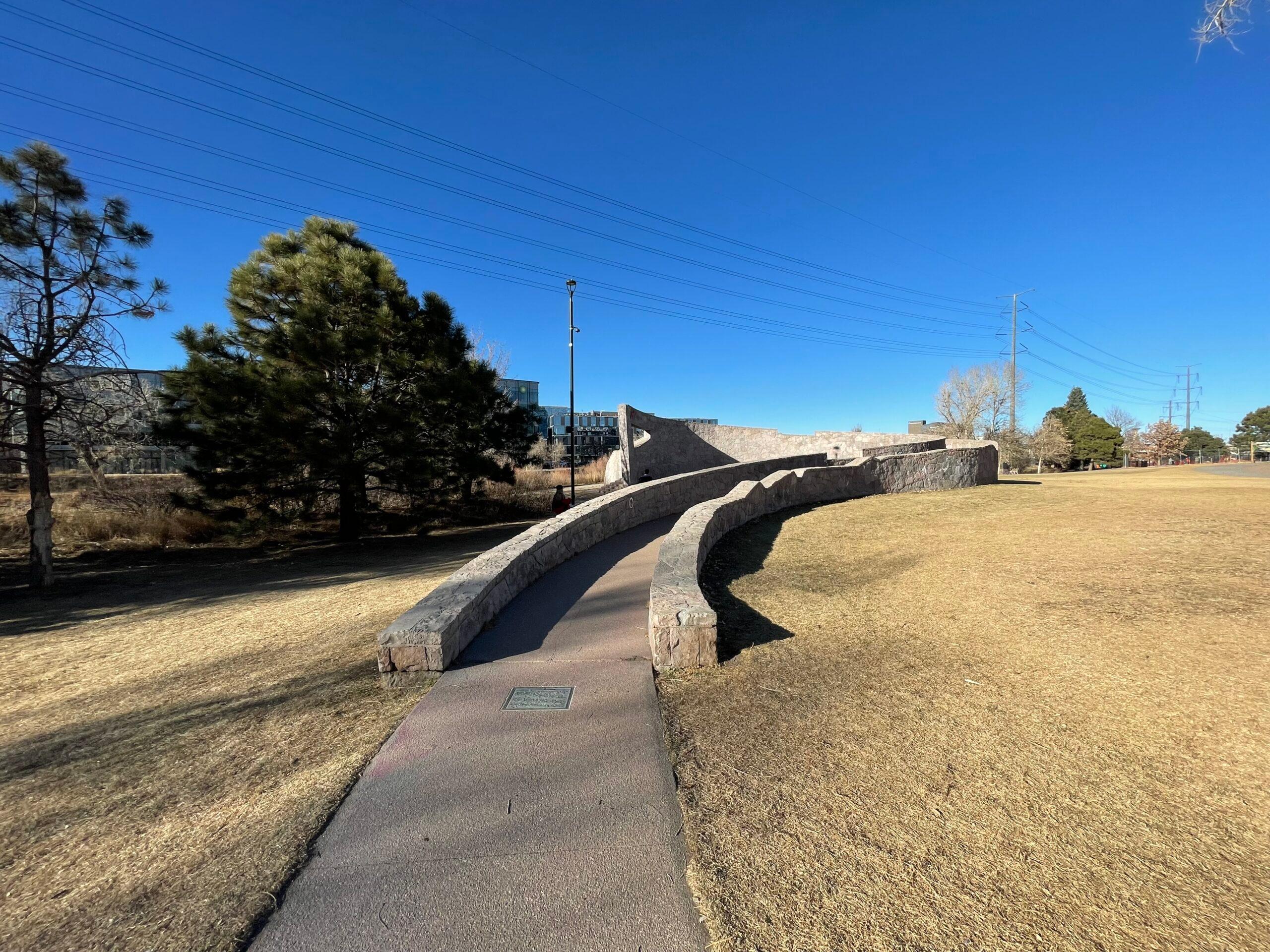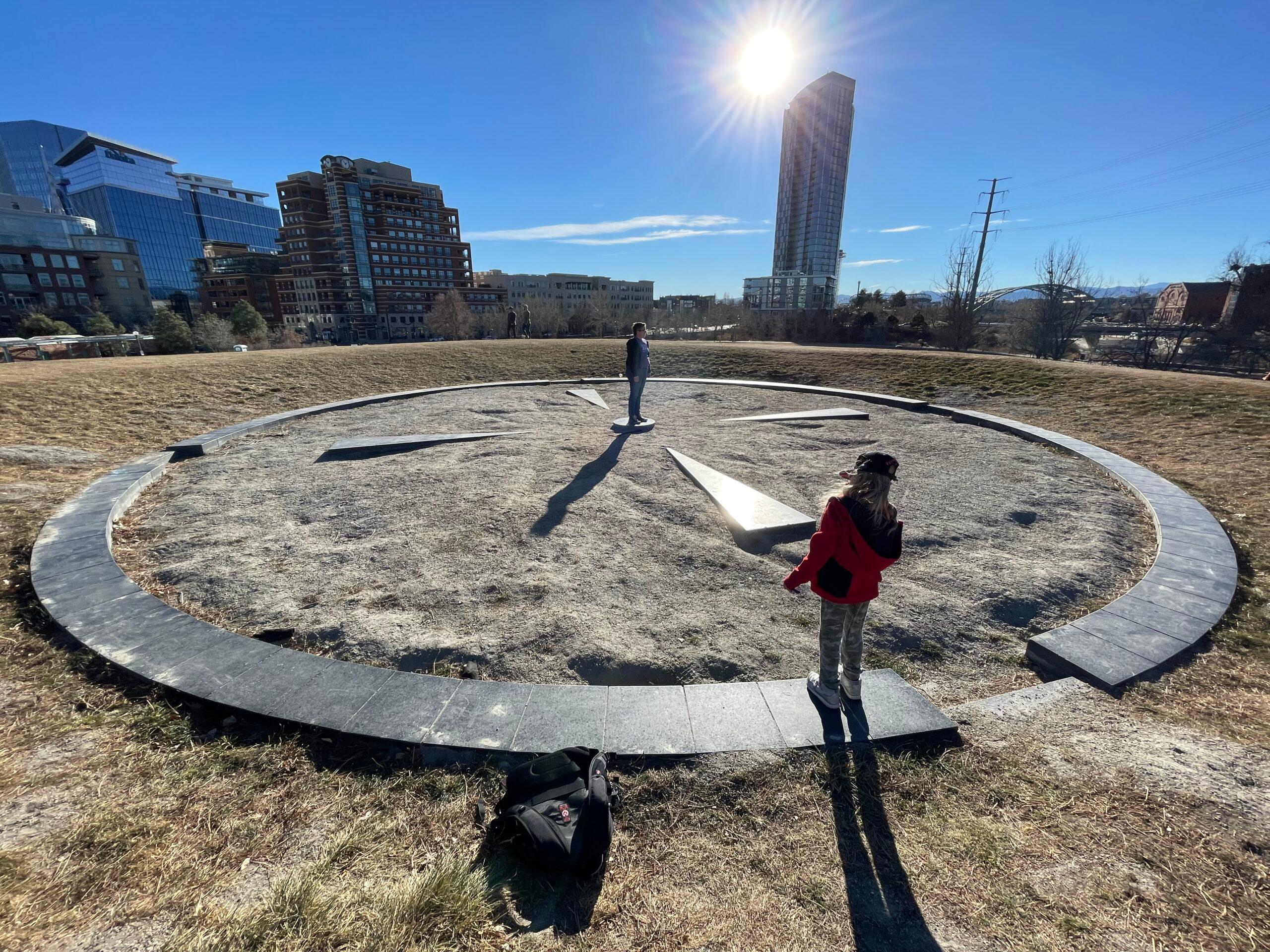Around 2006, my friends and I would ride our bikes to the berm in Commons Park to stand in the center of a granite circle wall that rose a couple feet high, part of an installation that looked like a sundial. We'd sing, scream, mutter and mumble. Our sounds would turn into otherworldly echoes. Then we'd sit in the grass, crack open a beer, and talk about life's big issues.
We called that place the sound phenomenon. For broke punks, it was the perfect spot for a date or to take out-of-town guests: romantic, relaxing and so uniquely Denver.
The city was quieter back then. The Riverfront Park development was in its earliest stages. At night, nobody was around, and Commons Park was a magical place to get away from the drama of collective houses, run-down apartments and day jobs.
The other day, I asked my partner and our kid to join me on a trek to the park to find the sound phenomenon. They begrudgingly agreed. We climbed to the top of the hill and saw the Druidic-like granite circle -- though it looks surprisingly run down and more buried than we recalled.
"That must be it, right?" I said.
I stood on the center slab of granite and began to hum. The phenomenon wasn't working. So I sang and shouted and whispered. Still nothing. I crouched. I stepped up on my tippy toes. I even walked around the installation, and still, nothing happened.
My partner tried the same. No luck.
My kid was getting impatient with us. People lying in the grass nearby started packing their bags, perhaps sensing our mounting frustration and hearing the odd noises we were making.
I searched the internet, and there was nothing explaining what had happened to the sound phenomenon -- or whether it was ever really there. The Denver Public Art Collection made no mention of the installation. I entered every keyword I could think of and came up with nothing.
Maybe the sound phenomenon never actually existed.
Before realizing the phenomenon appeared to be broken, I had already reached out to Denver Parks & Recreation: "There is a mysterious echo in a circular area at Commons Park. It seems to be there by design. I was wondering if anyone at Parks & Rec would be able to speak to this. My friends have always called it 'the sound phenomenon,' but that might just be among us..."
"Parks and Rec is not aware of any intended echo feature to the planning of Common's Park," Denver Parks and Recreation spokesperson Cynthia Karvaski answered. "There is a hill in the park where people gather at the top, but I don't believe that would be conducive to an echo."
That was a nice way of saying: "Are you tripping?"
If anybody knew whether there had been a sound phenomenon, Karvaski said, it would be Mark Johnson, the landscape architect with Civitas who designed the master plan for the park in the late '90s.
Turns out, we weren't tripping.
"There was a sound phenomenon that occurred if you stood in the middle of the circular granite wall on top of the hill," he wrote me. "We had called the space the sky garden in the original design. It was a black granite circle with a circular mound surrounding it, so that when you sat on that wall your attention was upward to the sky rather than outward to the city. In 2003, Westword named it 'best place for a pagan ritual,' which we loved."
Over the years, the hill at the top of Commons Park became a destination for train-hoppers, traveling kids and local high schoolers. After marijuana was legalized in 2012, the hill earned itself the moniker "Stoner Hill."
"Over the years there were nefarious activities from time to time, because a person walking up and over the circular berm might stumble on something weird, uncomfortable etc.," Johnson wrote. "When the 'stoners' took over the hill shortly after recreational cannabis, the police decided to be a constant presence rather than rigorously enforce, leading to the hill and sky garden to become a defacto homeless/druggie camp."
Apartments and condos had been rising around Commons Park, bringing wealthier people to the area, and unhoused youth were also finding a home in the park. But the neighborhood group, the Riverfront Park Association, soon took umbrage with the casual drug use, as Andrew Kenney reported in Westword in 2015, and the hill was fenced off and surveillance cameras were added to the area.
Nobody consulted with Johnson about how to rework the architecture. Parks and Recreation, which was taking heat, instead filled in the circular wall, destroying the sound phenomenon and the sky garden.

Just North of Stoner Hill is a large-scale public art installation by Barbara Grygutis called Common Ground -- a celebration of shared public space.
The sculpture includes a path to nowhere and a wall.
If you stand in front of the sculpture, within its curve, and make noise, there is a slight echo -- a reminder of the sound phenomenon that was destroyed.
A placard explains the artwork:
"Common Ground honors this site's historical use by diverse people. The 200-foot parallel, sculptural walls evoke a bend in the nearby Platte River. The exterior wall echoes the silhouetted mountains, the interior wall represents the urban center -- both cherished by Denverites. Contours in the wall frame city views. A pathway up the serpentine structure symbolizes Western trails, while cascading stairs provide a place to gather or simply contemplate the surroundings."
Despite the message on the official plaque, gathering is no longer permitted on Common Ground.
The inside of the installation has been vandalized. One of the tags is an official-looking stencil that sums up the rules: "NO STOPPING NO STANDING."













